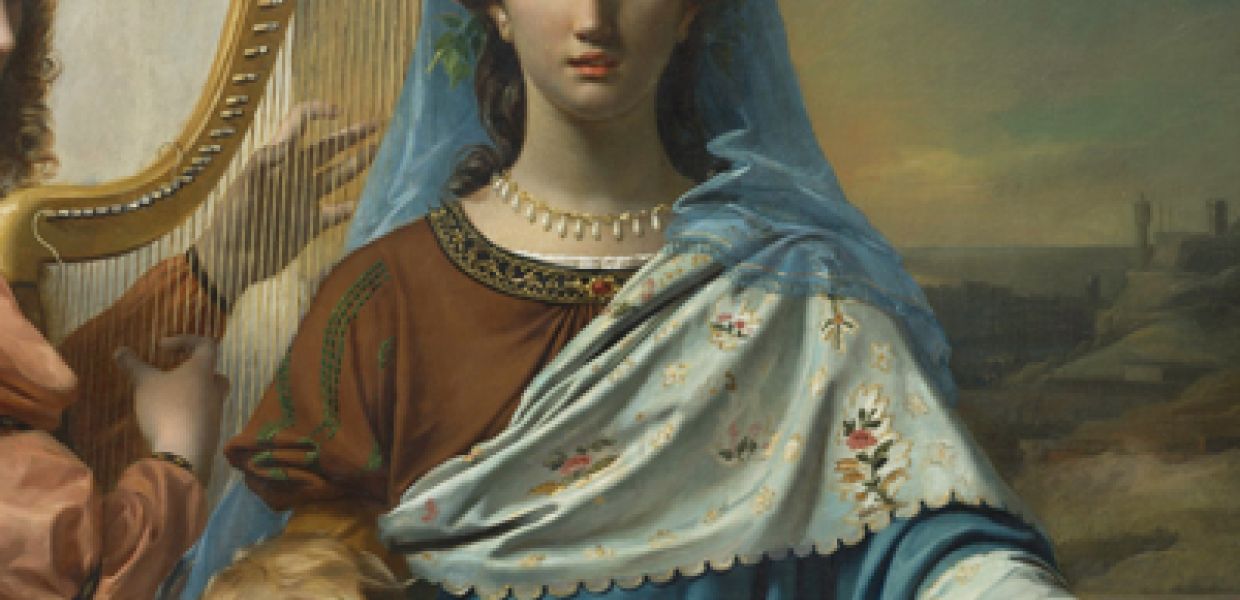Choosing a country's artworks for Europeana 280: Belgium

In this blog series, Europeana 280’s Exhibition Coordinator Ann Maher has been highlighting different national nominations, and finding out a bit more about some of the choices. Here, Ann looks at the diverse nominations from Belgium.
It is a special challenge for culturally divided countries such as Belgium to nominate so-called ‘national’ treasures for Europeana 280. The two largest regions comprise the northern Dutch-speaking Flanders and southern French-speaking Wallonia while the capital Brussels is bilingual.
Hans van der Linden of the Flemish Department for Culture, Youth, Sports and Media explains: “From a Belgian point of view, it is hard to talk about ‘Belgian’ art. Speaking about ‘Flemish art’ would not be correct either because the Flemish viewpoint on cultural heritage is to display diversity rather than focussing on identity-confirming masterpieces.” From a Flemish perspective, museums are custodians of culture. “Rather than the government deciding, Flanders asked platforms such as Contemporary Art Heritage Flanders (CAHF) and the Flemish Art Collection (VKC) to make a selection”, van der Linden explains. “These platforms are bringing together different museums focusing on contemporary and fine arts and have a task to promote those internationally.”
The national selection was therefore a process involving several cultural agencies and spans nearly 900 years of art heritage from illuminated manuscripts of the 12th century to work created in the 21st. What are some highlights in the Belgian selection?
Perfection in paint
Two masterpieces from Jan van Eyck are included in the CAHF nominations. The Ghent altarpiece from the Saint Bavo Cathedral completed in 1432 and The Virgin and Child with Canon Joris Van der Paele from the Groeninge Museum in Bruges. Van Eyck was a diplomat and a court painter and one of the most important figures in the Northern Renaissance. “His precise observation and naturalistic rendering of reality, his brilliant colouring and the oil technique that he perfectly mastered, though did not invent, gives Van Eyck a virtuosity that scarcely will ever be matched”, according to the Groeninge.

Sainte Cécile de Rome, François-Joseph Navez, Délégation générale à la numérisation des patrimoines culturels, public domain. Neoclassicist François-Joseph Navez was the director of the Académie Royale des Beaux-Arts in Brussels from 1835-1862
A contemporary artist also known for his stylistic perfection is Michaël Borremans. His painting The Unicorn (2010) is a nomination from S.M.A.K, (Stedelijk Museum voor Actuele Kunst) in Ghent. Initially trained in photography and graphic design, Borremans turned to painting at the age of 30 and his atmospheric and unsettling works invite multiple interpretations.
Romance, neoclassicism and decadence
Selections from the Fédération Wallonie-Bruxelles come from five different institutions and include the painter and sculptor Antoine Wiertz, who is a somewhat controversial artistic figure in the Belgian Romantic movement. His paintings, often on a huge scale, depicted historical and religious scenes but also the erotic and grotesque. His first great work, Les Grecs et les Troyens se disputant le corps de Patrocle (1836) is a nomination from the Musée des Beaux-Arts de Liège.
Neoclassicist François-Joseph Navez was a pupil of Jacques-Louis David who had a strong influence on academic salon painting in the early 19th century. Navez became the director of the Académie Royale des Beaux-Arts in Brussels from 1835-1862. The vivid Sainte Cécile de Rome (1824) is a selection from the Musée des Beaux-Arts de Mons.
Belgium’s significant contributions to symbolism and art nouveau are reflected in the choice of artists Fernand Khnopff and Félicien Rops. Both were members of the influential artistic group Les XX (Khnopff was a founder member, Rops was invited later).
In Pornokrates (1878), a selection from the Musée Félicien Rops, the artist depicted his vision of contemporary women and their arrogance, composure and ruthlessness. The museum quotes a letter from Rops to his friend H. Liesse in 1879. “This drawing delights me”, Rops wrote. “I did this in four days in a room of blue satin, in an overheated apartment, full of different smells, where the opopanax and cyclamen gave me a slight fever conducive towards production or even towards reproduction”.
We hope the art selected for the Europeana 280 campaign has been surprising and inspiring you. Tell us about some of your personal highlights on Twitter using #Europeana280.
